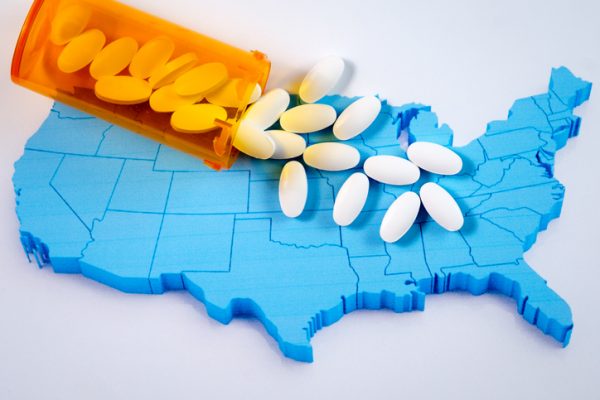
In early March, as Covid-19 began to peak, many hospitals and health systems struggled to manage their medication supply chain. Between make-shift care areas for Covid-19 patients with no place to house medications, drug shortages, and manual tracking of medication inventory, troubling gaps in medication management were revealed.
Now that we’re seeing a significant resurgence in Covid-19 infections and hospitalizations in some areas—in tandem with many hospitals resuming elective surgeries and routine care—it’s even more important to close these gaps. We can do so by considering what we’ve learned so far in this pandemic and better leveraging real-time pharmacy intelligence.

With the Rise of AI, What IP Disputes in Healthcare Are Likely to Emerge?
Munck Wilson Mandala Partner Greg Howison shared his perspective on some of the legal ramifications around AI, IP, connected devices and the data they generate, in response to emailed questions.
Beyond the hospital, this data is also vital for retail pharmacies. It empowers these pharmacists to identify and address emerging health trends in their communities and counsel patients to keep them healthy and out of the hospital. This is one of several important measures to ensure that acute care facilities have the bandwidth and beds to manage another influx of Covid-19 cases.
Harnessing the power of hospital pharmacy intelligence
Medication use data can tell us a lot about how individual hospitals and the communities they support are faring through the epidemic and provides a realistic picture of readiness for future spikes.
Beyond looking at medication usage within specific geographies, there is also a high value in benchmarking medication usage across the nation. Some states, for example, have yet to hit an initial peak, so they must look beyond their own pharmacy data. And the states that have already experienced the first wave can get a more complete, predictive picture by looking at aggregate data—how the pandemic impacted them the first time may be different from the second. Every new medication data point helps healthcare leaders make better decisions about their operations and clinical care.
At a bare minimum, hospitals and health systems need access to pharmacy data on the most commonly used medications for treating Covid-19 to prevent shortages and manage inventory optimization. Understanding how often these medications were used during the first wave, as well as where they were used, allows for proactive and informed planning for anticipated pharmacy supply chain demand.
As an example, because sedatives are critical to supporting intubated patients, there was a steep rise in their use across the country earlier this spring, promptly followed by a problematic shortage in many areas. Based on data from 50% of the healthcare facilities in the U.S., two of the most common sedatives, propofol and dexmedetomidine, saw a five-fold increase in usage compared to pre-Covid-19 rates.
Leveraging pharmacy insights outside the hospital
Before Covid-19, pharmacy technology and intelligence had been used mainly to help patients manage medications and monitor adherence. However, the pandemic has pointed to the need for deeper patient engagement by pharmacists. Retail pharmacies can and should be driving more meaningful interactions with patients, keeping as many patients healthy and out of the hospital as possible during a second wave or resurgence of the pandemic.
Real-time pharmacy data on vaccination prescription volume across retail pharmacies is an example of an actionable data insight to drive these interactions. Since Covid-19, there has been a sharp decline—to near zero —in the administration of preventative vaccines such as the flu shot, T-Dap, Hepatitis, and others. This is concerning, to say the least, but with this knowledge, pharmacists can make concerted efforts to counsel patients around the importance of staying up to date on vaccines, flag any spikes in associated illnesses to providers, and supply more meaningful, educational efforts to encourage routine vaccinations.
These and other pieces of real-time data, such as recent increases in prescriptions for anti-depressants and anti-anxiety medications, can help pharmacists conduct more targeted patient engagement and counseling, provide medication reminders, refill notifications, and other health education efforts.
Looking Forward
Understanding the medication supply chain, coupled with predictive analytics, will allow hospital pharmacies to be better equipped for any resurgence of the pandemic in their areas. Similarly, community pharmacies should be tracking broader trends to facilitate more holistic and data-driven care. They will also be key sites for the administration of the Covid-19 vaccine once it is available. Healthcare leaders across all settings cannot afford to overlook the pharmacy as anything less than pivotal in supporting patients through the Covid-19 pandemic.
Photo: Stuart Ritchie, Getty Images
James Stevenson, is VP, Medication Systems Strategy at Omnicell
Stevenson has extensive experience in pharmacy and medication management, in both academic and health systems roles at major institutions including the University of Michigan, where he was Chief Pharmacy Officer for UM Health System. Jim assumed his current role at Omnicell as VP of Medication Systems Strategy in 2018.














